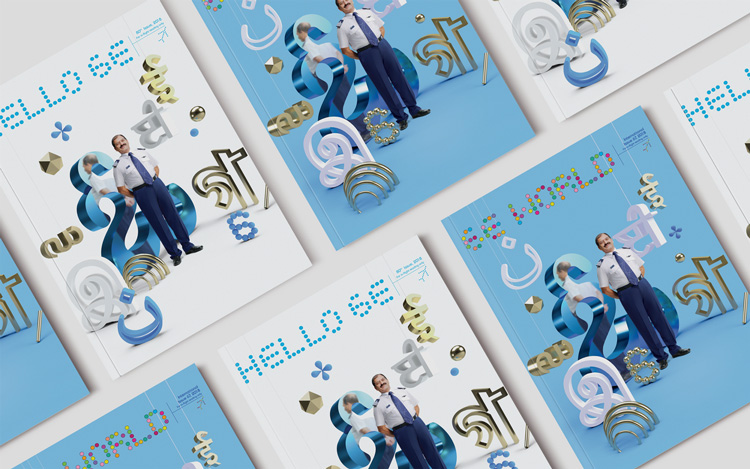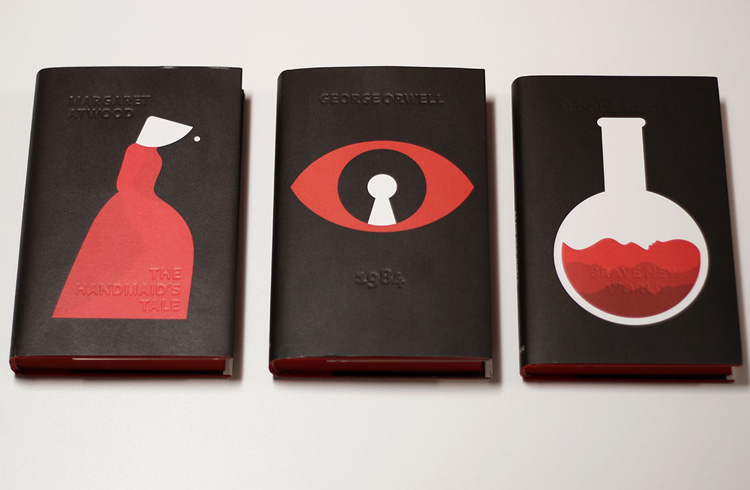Designers to watch: Simoul Alva
As part of our series looking at up-and-coming creatives, we speak with prolific, 23-year-old graphic designer Simoul Alva, about India’s fastidious approach to branding, her experiences working alongside Pentagram partner Michael Bierut, and how studying in Ahmedabad has given her a ruthless work ethic.
Pentagram, Sagmeister & Walsh, and Wieden + Kennedy; Mumbai-born graphic designer Simoul Alva had visited all of them before she had even graduated from her degree at the National Institute of Design in Ahmedabad, India.
23-year-old Alva has travelled between the US and India for the last five years completing freelance work and internships for some of the world’s most illustrious studios, while studying for her undergraduate at India’s first ever design-dedicated university.

The graphic designer says her creative drive stems back to when she was a child; her mother and father, who are an English teacher and real estate manager respectively, encouraged her to pursue artistic activities from the age of three, which is when she went to her first drawing class.
“My mum was very insistent that I should have hobbies outside academia — she used to paint and draw charcoal a lot herself,” Alva says. “I’ve been drawing since I was three, and I’ve always been interested in art and craft. Whenever I did well in a school test or it was my birthday, I’d go to a local stationery store to pick a present.”
It was her love for drawing that led her down the path of design — she first found out about the National Institute of Design from her drawing teacher’s son, who went to the same secondary school as her in Mumbai and was going on to study at the university.

The National Institute has an interesting history itself — the institution was founded in 1961, a decade after India was declared independent, and five years after the Government adopted the industrial policy resolution — a report and set of guidelines on how to develop industries in India.
British furniture designers Ray and Charles Eames travelled to India for three months in collaboration with the Indian Government, exploring the problems the country was having in its design and quality of consumer goods, with the aim of offering recommendations on how it could improve. Thus, India’s first design school was born as a centre for research and training in industrial design and visual communication.
Alva went on to do a Bachelor of Arts (BA) in Design there, which lasted five years. The longer time span comparative to UK courses and the broad degree title allowed her to spend time getting to know different fields, Alva says, with the first year dedicated to “exploring many different design disciplines”.

In her second year, she went on to specialise in graphic design, then by her third year, Alva had been selected to represent India for graphic design at WorldSkills 2017 in Abu Dhabi, United Arab Emirates (UAE), an international skills competition, and won. This same year, she also landed her first paid internship at Indian brand design studio Codesign, based in Gurugram.
In her fourth year, it was time to start putting her training into practice in the real world. She applied to Pentagram’s New York office for an internship, directly through partner Michael Bierut, and after a Skype interview, landed herself a six-month paid placement, where she worked on projects such as creating the infographics for the Massachusetts Institute of Technology’s (MIT) magazine, which Bierut’s team redesigned last year.
“It was an extremely humbling experience,” she says. “When I applied, I never thought I’d hear back. When I was there, I never felt homesick or out of place, and I felt like I was learning a lot because I was in a different country and the context was so different. Some of this was just small cultural differences — for instance, we’ve only just got Spotify in India! I learnt all about it, both from the people I worked with and my flatmates in New York.”

While she was working full-time at Pentagram, Alva was keeping her options open, also doing freelance commissions for Sagmeister & Walsh’s New York office, and Wieden + Kennedy’s New Delhi office, the latter of which is where she expanded her editorial skills by working on the cover design of the in-flight magazine for one of India’s biggest airlines, IndiGo.
After her Pentagram internship had finished, Alva returned to Ahmedabad, India in 2018 to finish the rest of her degree.
Through her work for both US and Indian design studios, Alva says she learnt that the approach to design is starkly different in the two countries, giving that the field of “graphics” is still establishing itself in India.

“In the US, an understanding of visual design has been around for much longer,” she says. “Graphic design as a field is still relatively new in India. In a way, that means it’s a lot more exciting with more opportunity and is less saturated. But it also means people still look at design as an after-thought in business, rather than throughout the whole process.”
She adds that finished product differs too, given challenges that arise in India, such as the fact that there is not one unifying language across the country – India has 22 national languages, 13 written scripts or alphabets and 720 spoken dialects or accents.
“Indian graphic design is very functional,” she says. “Things may not look as beautiful or magnificent as in the US, but they are designed with a lot of thought because they need to work across cities as language changes.
“An app, signage system or new identity has to be translated and be made accessible for more people,” she adds. “In the US, I feel there is more freedom to create something that’s beautiful. But the number of languages does make typography very fun to look at in India, as there are so many glyphs.”

India’s work ethic, first instilled in her by late nights working on practical projects at university, has also well-prepared her for working as a designer, she says. “We do keep longer hours in India, and people do work on weekends,” she says. “To be honest, that felt like good training for what’s to come. As a designer, I feel you need to work on projects to a tight turnaround, irrespective of where you are in the world.”
While Alva admits “timing and luck” have played a big part in her ability to bolster her portfolio with impressive studios and clients, she says that perseverance, adaptability and flexibility have also been key to her success so far – but often her technical ability is judged by her young age.
“People tend to not take you seriously, especially if you’re the lead on a project, or a freelancer,” she says. “In my opinion, this has nothing to do with being a woman, but is instead about age. It’s important to make [clients] realise how much value good design can have for their products and services, and not to buckle to pressures of low fees.”
A tenacious attitude has helped her get to where she is today, she adds, and she advises other young designers breaking into the industry not to “sell themselves short”.

“Have the confidence to apply for things even if they seem ridiculous at the time,” she says. “You never know what will work out. It’s okay to get rejected – design is about being persistent and it can take years before something comes of it.”
As a young, female, Indian designer, Alva says she has had a very positive and welcoming experience working in the US and beyond — but is aware that this is not the case across the board.
Design Council research conducted last year showed that, in the UK alone, there is a diversity problem in the industry, with over three quarters of the workforce being male, and only one in eight business owners being from BAME (black, Asian and minority ethnic) backgrounds. In the US, four fifths of designers are white, though the number of female designers is higher, with just over half being women, according to Data USA.
“Everywhere I worked in the US felt really mixed, with people from all over the world but I’m sure this doesn’t happen everywhere,” Alva says. “I think this is something studios should stand for, and conferences should also look to attract a more diverse range of speakers. Design is highly contextual and the more voices you have from different backgrounds, the less lopsided the understanding.”

Since moving back to Ahmedabad, India last year to finish her degree, Alva has itchy feet again now she has graduated and is soon set to cut her teeth on a completely different side to design — she will going client-side and will be focusing on consumer products, when she moves to Mountain View, California in the US and embarks on an internship at Samsung Research America, as part of its think tank team.
Made up of researchers, scientists, engineers and designers who create Samsung products, including phones, smart watches and three-dimensional cameras, she will be moving away from identities and signage and towards user interface (UI) and digital design.
“I want to work at places that engage with different aspects of visual design over the next few years,” she says. “Having just graduated, I’m excited to explore and challenge myself.”
Find out more about Simoul Alva here and follow her on Instagram and Behance.

-
Post a comment





